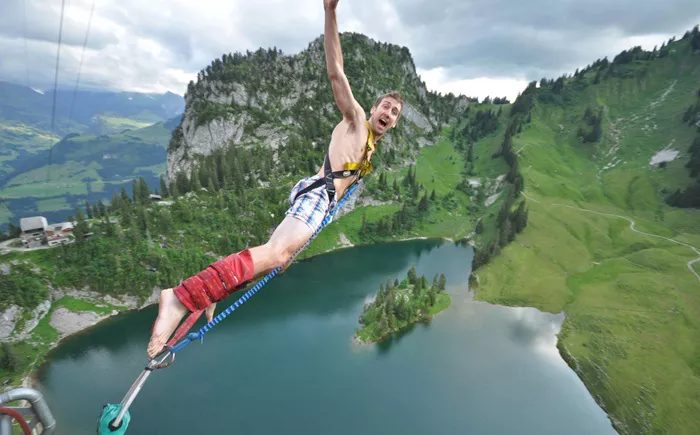Bungee jumping, a thrilling sport involving a leap from great heights with an elastic cord tethered to the jumper, carries inherent risks. One of the most critical safety concerns in bungee jumping is the potential for cord breakage. Despite stringent safety measures and technology advancements, understanding the typical reasons for bungee cord breakage is crucial for ensuring the safety of jumpers. This article delves into the scientific and technical aspects of bungee cord breakage, exploring the causes and preventive measures.
Materials and Manufacturing Deficiencies
Cord Material Quality
The quality of the material used in bungee cords is paramount. Most bungee cords are made from natural or synthetic latex, which offers the necessary elasticity and strength. However, the quality of latex can vary significantly. Inferior quality latex may degrade faster, losing its strength and elasticity over time. This degradation can lead to a higher risk of breakage, especially under the extreme stress of a jump.
Manufacturing Standards
The manufacturing process of bungee cords involves various steps, including the vulcanization of latex to enhance its strength. Any deviation from standard manufacturing practices can result in defects. For instance, improper curing can cause inconsistencies in the cord’s thickness and elasticity, making it more prone to breaking. Rigorous quality control and adherence to manufacturing standards are essential to prevent such issues.
Overloading and Misuse
Exceeding Maximum Load Capacity
Bungee cords are designed to handle a specific load, which includes the jumper’s weight and any additional dynamic forces experienced during the jump. Exceeding the cord’s maximum load capacity can cause overstretching and eventual breakage. This is particularly a concern in cases where the jumper’s weight is miscalculated or when multiple jumpers use the same cord, leading to an overload situation.
Improper Use and Maintenance
The proper use and maintenance of bungee cords are crucial for their longevity. Misuse, such as using a cord that has been subjected to extreme conditions or not adhering to the recommended maintenance schedule, can weaken the cord. Regular inspection for signs of wear and tear, such as cracks or fraying, is necessary to prevent accidents.
Environmental Factors
UV Exposure
Bungee cords are often exposed to sunlight, which can lead to degradation of the latex material due to ultraviolet (UV) radiation. Prolonged UV exposure can weaken the cord, making it more susceptible to breakage. Protective measures, such as storing the cords in a shaded or UV-resistant environment, can help mitigate this risk.
see also: How Long Does Bungee Jumping Take
Temperature Extremes
Extreme temperatures, both high and low, can affect the performance of bungee cords. High temperatures can cause the latex to become overly pliable, reducing its strength, while low temperatures can make it brittle. It is essential to store and use bungee cords within the recommended temperature range to ensure their integrity.
Structural Failures and Design Issues
Cord Degradation Over Time
Even with the best materials and manufacturing processes, bungee cords experience wear and tear over time. Repeated use causes gradual degradation of the cord’s strength and elasticity. Regularly replacing old cords and inspecting them for any signs of deterioration is crucial for maintaining safety.
Design Flaws
Design flaws, such as incorrect cord length or inadequate attachment points, can contribute to cord breakage. For example, if a cord is too short or has not been correctly configured for the jumper’s weight, it may experience excessive strain, leading to failure. Ensuring that all design aspects are correctly aligned with safety standards is vital.
Conclusion
Bungee jumping is an exhilarating sport that demands meticulous attention to safety, particularly concerning bungee cord integrity. The primary reasons for bungee cord breakage include material and manufacturing deficiencies, overloading and misuse, environmental factors, and structural failures. By understanding these causes and implementing stringent safety measures, the risk of cord breakage can be significantly reduced, ensuring a safer experience for all participants.
FAQs:
How often should bungee cords be replaced?
Bungee cords should be replaced regularly based on usage and inspection findings. It is recommended to follow the manufacturer’s guidelines and replace cords that show signs of wear or have been used extensively.
What are the safety checks before a bungee jump?
Safety checks include inspecting the bungee cord for any signs of damage, ensuring the correct attachment of the cord, verifying the jumper’s weight and the cord’s capacity, and confirming that all equipment is properly secured.
Can weather conditions affect bungee cord safety?
Yes, extreme weather conditions, such as high UV exposure or extreme temperatures, can affect bungee cord safety. It is important to store cords in appropriate conditions and avoid using them if they have been exposed to harsh environmental factors.
What should you do if a bungee cord breaks during a jump?
In the event of a cord breakage, the safety measures in place, such as backup systems and emergency protocols, should be activated immediately. Proper training and equipment are essential to manage such emergencies effectively.
related topics:
- What Factors Have to Be Taken into Consideration When a Person Wants to Go Bungee Jumping?
- Top 10 Highest Bungee Jumping in the World
- How Do People Get Back up After Bungee Jumping?

